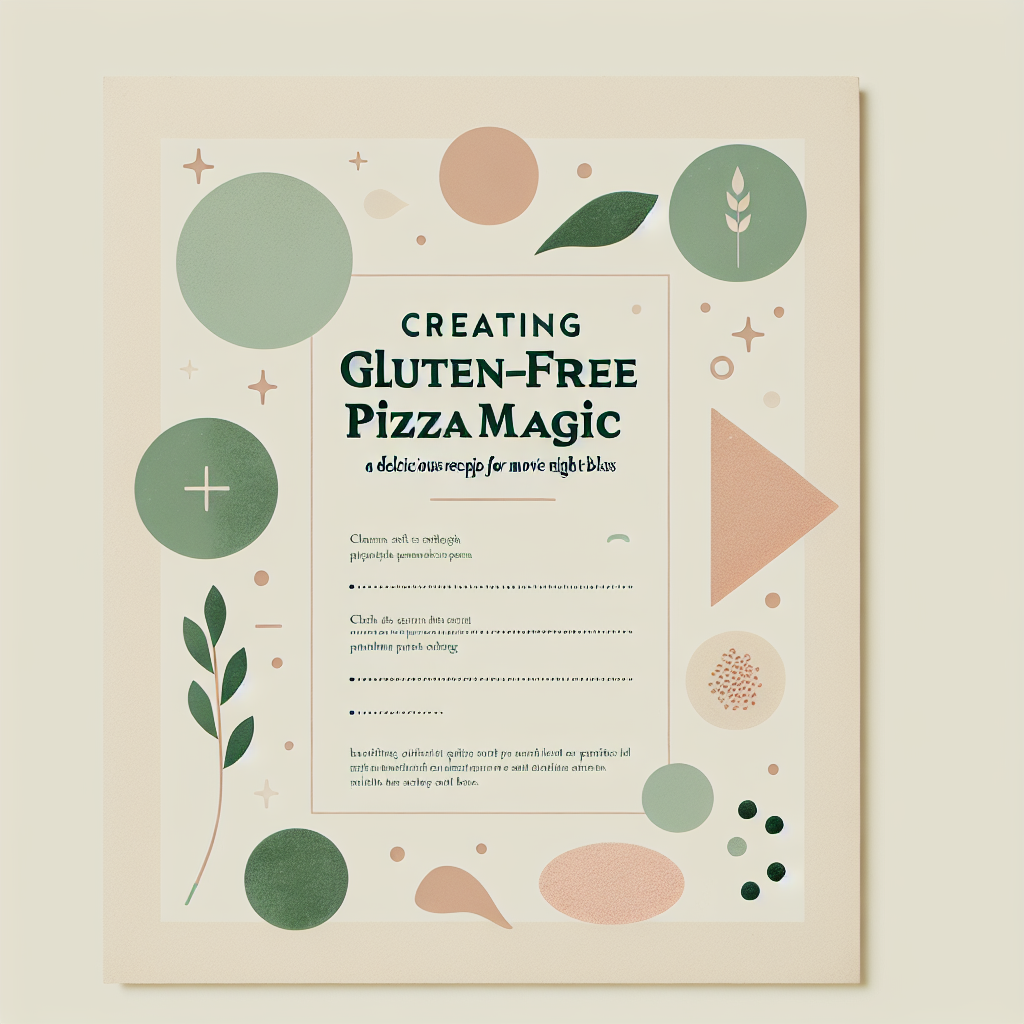It’s your typical Wednesday evening. You’ve had a long day, and all you want is to relax, spend some quality me-time, and maybe binge-watch your favorite series with some comfort food. The idyllic solution? A delicious, warm, and gluten-free pizza. Yes, you read it right, let’s chat about recreating the enchanting allure of a perfect pizza, all the while, keeping it entirely gluten-free. Pizza night, here we come!
If you are new to the gluten-free lifestyle, it might seem like pizza is off the menu. But that’s far from the truth. Creating a gluten-free pizza at home is not only doable but also downright delicious.
Before we jump into it, if you’re just getting started on your gluten-free journey, make sure you’ve read our guide on [Going Gluten-Free the Easy Way](#). It’s packed with practical tips to help you navigate this new way of life.
First, let’s discuss our superstar – the gluten-free pizza dough. It’s essential to understand that gluten-free dough will behave differently than the gluten dough you may be used to. That doesn’t make it any less perfect for pizza, just different. Gluten provides elasticity to the dough, giving it that familiar chewy texture. While we can’t replicate that entirely, our gluten-free solutions come very close.
One of the easiest ways to make gluten-free pizza dough is with a store-bought mix. There are some really good ones available now. Look for one that has a blend of flours for the best texture. I am partial to a mix of rice and sorghum flours combined with potato and tapioca starch.
Alternatively, you can also try our homemade [Gluten-Free All-Purpose Flour](#) mix for a smooth, pliable dough – ideal for pizza base. Remember that gluten-free dough is generally stickier and looser, so don’t worry if it doesn’t look exactly like the regular dough.
Now that we have our dough, let’s talk toppings. This is where you can really get creative and put your personal stamp on your gluten-free pizza. Choose fresh and gluten-free friendly ingredients. The great thing about pizza is that it can wear many hats. Whether you are in the mood for something hearty or something light, there’s a pizza for that!
It’s also an excellent opportunity to sneak in some vegetables. Vibrant bell peppers, succulent olives, crisp onions, the combinations are endless. And let’s not forget the cheese. Fresh mozzarella, parmesan, or a good quality vegan cheese, if you’re dairy-free too, all make great choices. And if you want to go the extra mile, some fresh basil leaves or chili flakes give it that pizzeria finesse.
Now ensure your sauce is gluten-free too. Many store-bought pizza sauces can contain hidden traces of gluten, so always double-check the label. But homemade pizza sauce is refreshingly simple to prepare with just a few ingredients, like canned tomatoes, garlic, onion, and herbs.
Alright, we have the dough and the toppings, so let’s fire up that oven. Something to keep in mind when baking gluten-free pizza is that it generally needs a higher temperature than gluten-based pizza. I find a preheated oven of 475°F (240°C) works best. Also, remember to par-bake the crust for about 10 minutes before adding your toppings. This will prevent it from getting soggy and help it crisp up nicely.
And voilà, with the smell of fresh pizza wafting through your house, your movie night just got a significant upgrade. Gluten-free pizzas, so fabulous and versatile, you’ll wonder why you didn’t try them sooner.
Adjusting to a gluten-free lifestyle does not mean saying goodbye to happiness, friends. It just requires a little adjustment and perhaps some trial and error till you find what works best for you. And when you do, the satisfaction of having created a comfort food classic, sans gluten, can indeed be the highlight of your day.
Now roll up those sleeves, play your favorite playlist, and make your kitchen smell like an Italian pizzeria. I can’t wait to hear all about your pizza creations. Remember, the joy of gluten-free lifestyle lies not just in the eating, but also in the creative, mindful process of cooking.
**Category: Baking & Cooking Science**


